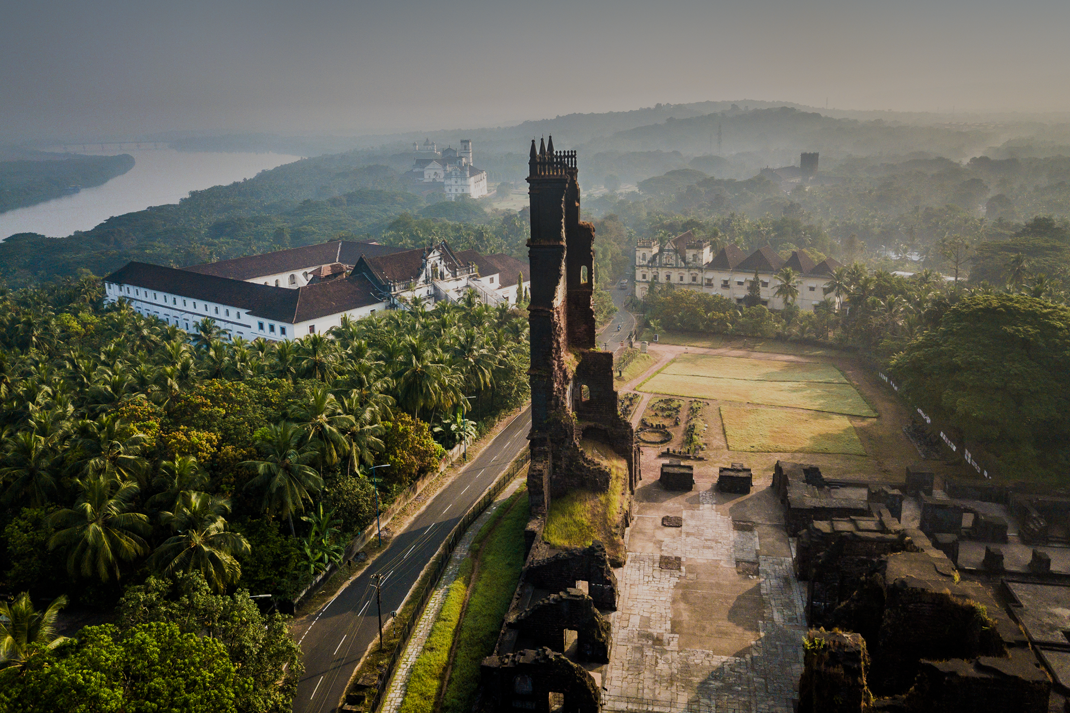Why Goa?
Goa is not all about the sun, sand and beaches. It is slowly emerging as a industrial hub among entrepreneurs for its ideal work-life balance, the perfect environment for innovation, fast improving connectivity and physical infrastructure, relatively affordable real estate, high literacy a supportive state government, and access to clientele not just from India but across the world.
Using this to our advantage, our environmentally-friendly vegan skincare brand turtle and snail.co was born using fruits, plants and minerals from the state to give back to the state, and propagate the thought that the ease of doing business does not have to be at the cost of environmental degradation.
The state of Goa has so much to offer through its various colourful festivals that not only showcase the culture, traditions and cuisine of the state but also bring together people across religions and castes, eating, drinking and making merry like one big happy family. Below are a few of the most popular festivals you need to know about:ur customers. Describe a product, make announcements, or welcome customers to your store.
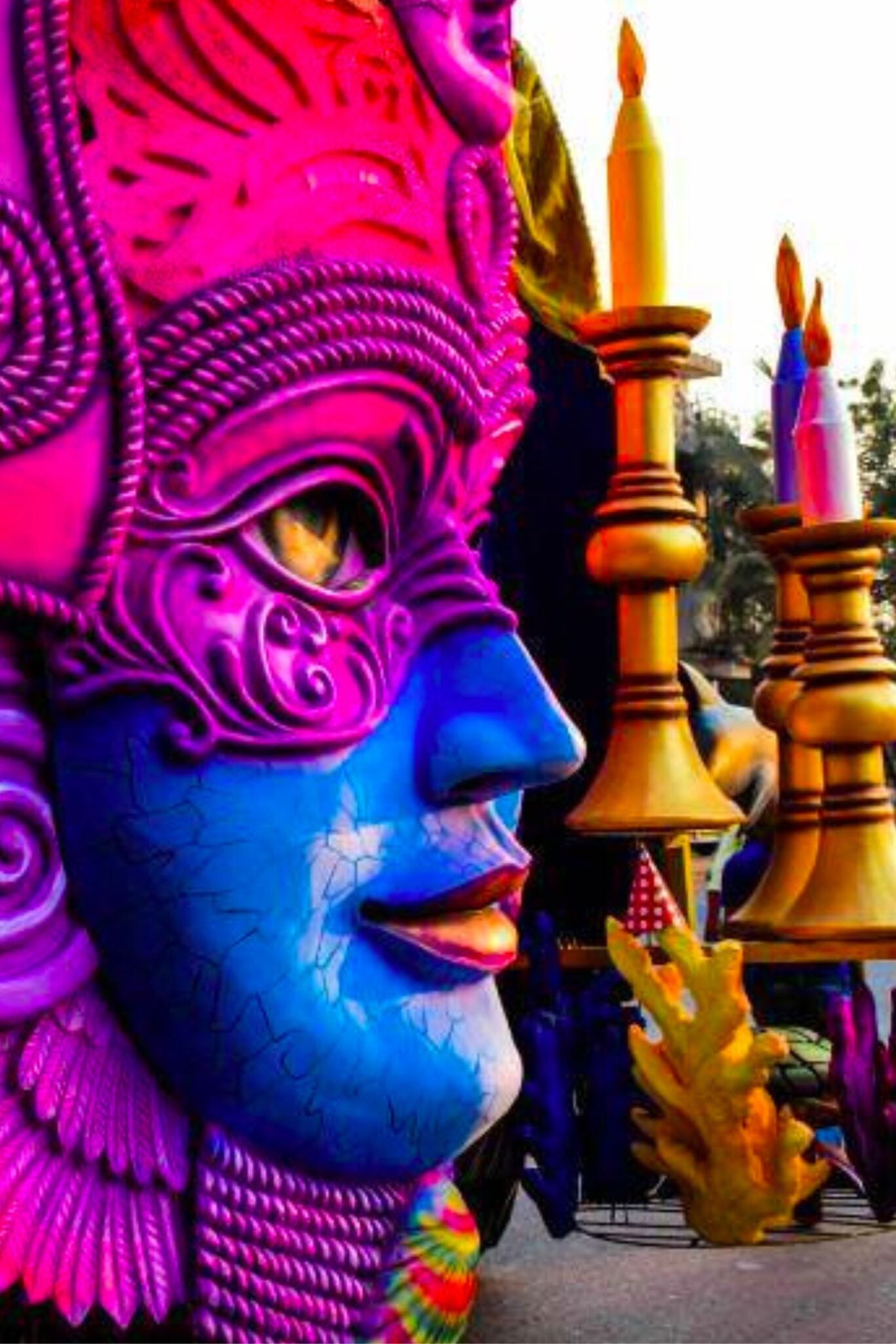

carnival
Four days of fun before 40 days of fasting
Visit Goa during Carnival in February and you will be under direct orders from the legendary King Momo- —traditionally a tall, fat man, considered the king of Carnival and whose appearance signifies the beginning of festivities—to eat, drink and make merry for four days straight.
A festival that started in the 18th century, Carnival is meant to be a feast of food, drinks, music, dance and fun – before the 40 days of Lent, observed by Catholics as a season of abstinence and prayer.
Goa’s main cities are adorned with striking masks, colourful streamers, and lit-up streets during the annual celebration. There are also stalls selling food and drinks, pop-up bazaars, revellers throwing water balloons and colour at each other, colourful float parades, and live music and dance performances in the city’s gardens and open spaces.
A legacy of the Portuguese, carnival attracts several tourists and locals eager to view float parades flocking to various parts of the state.
While the float parades are reserved for the day, the evenings are kept for gala balls, and people partying on the streets all through the night. The festival concludes with the famous red-and-black dance held by the Clube National in Panaji, Goa’s capital city, on the final day.
In the end, one float receives the award for its originality of concept, costume, performance, music and the visual effect of “displaying the carnival spirit”, but everyone returns home happy.
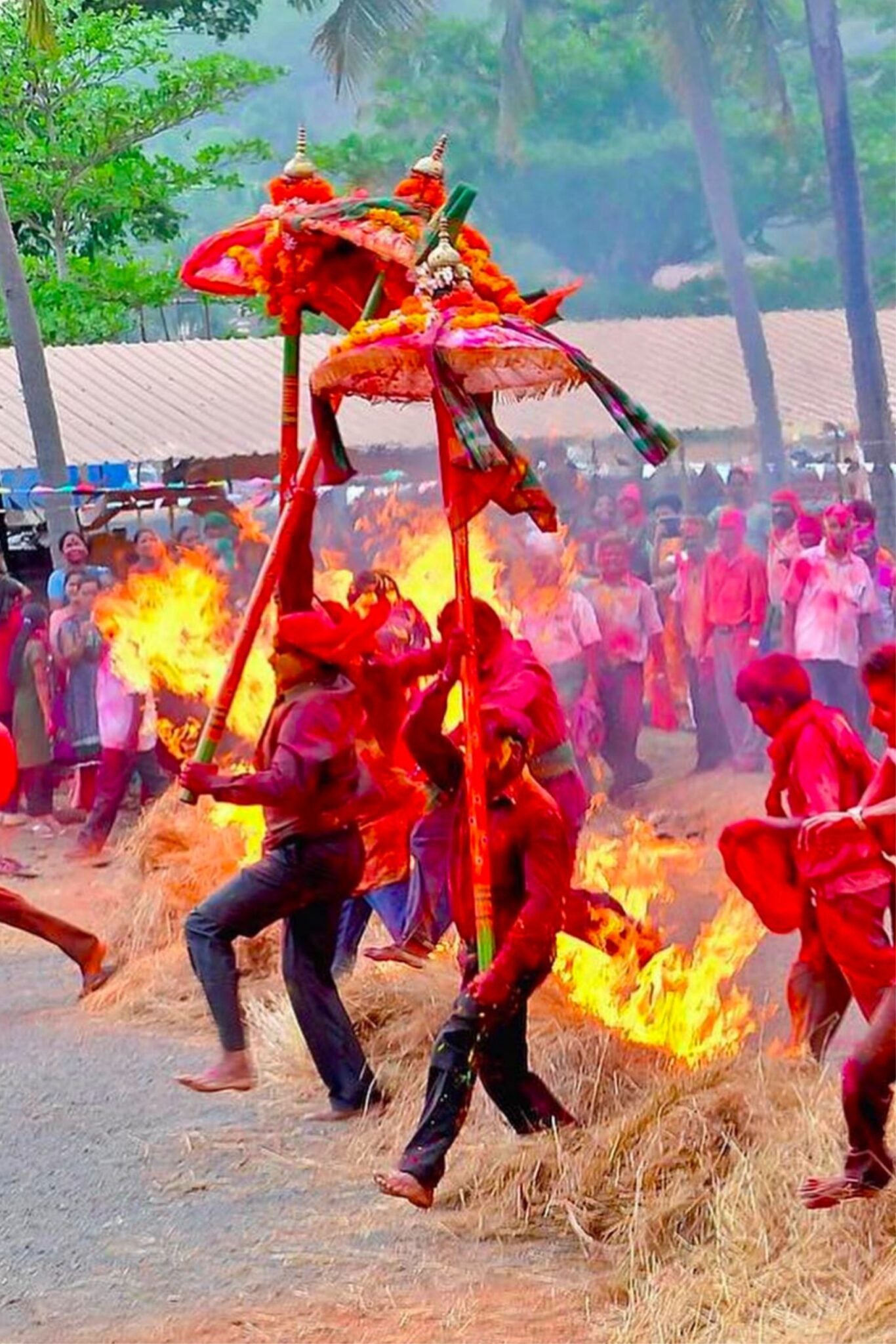

Shigmo
Celebrating a rich, golden paddy harvest
Don’t be alarmed if you’re in Goa around March and see horse and lamp dances, fugdi, painted faces, colourful costumes, and crowds of people smearing each other’s faces with colour as a form of greeting.
It just means you’re right in time for Shigmo or the Shigmotsav festivities, the celebration of a rich, golden harvest of paddy by the tribal communities of Goa, including the Kunbis, Gawdas and Velips. The festival also marks the onset of spring, and celebrations last over a fortnight in the Phalgun-Chaitra months of the Hindu calendar that correspond with March-April every year.
The festival begins with Naman, the invocation of local folk deities on the village maand, or the village stage, to the beats of percussion instruments like the ghumot, dhol, mhadle and tashe by men. This is the romta mell that moves from one village to another. The celebration is replete with traditional, colourful costumes, mythological installations, painted faces and colourful costumes. Folk dances like ghodemodini (a dance of equestrian warriors), gopha and fugdi are among the many performed by the participating communities.
Like Carnival, Shigmo is also marked with floats, a departure from tradition for celebration in the urban areas of what is essentially a rural festival. The float parades have, over the years, drawn tourists, both domestic and international.
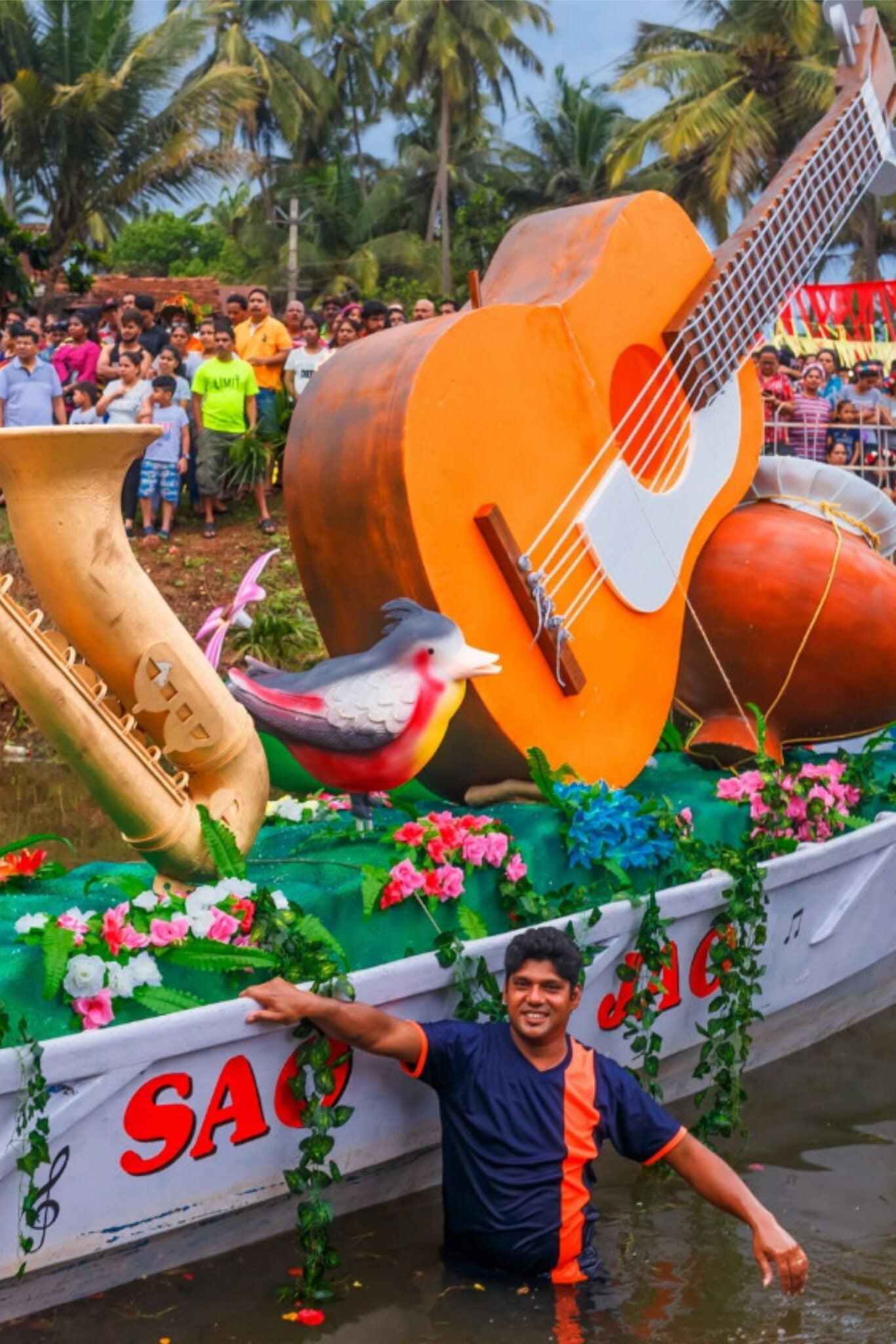

Bonderamne
Flagging off a full day of fancy dress and floats
To witness more fancy dress and floats, coupled with some colourful flags, head on over to Divar island during the Bonderam festival that typically takes place on the fourth Saturday of August every year. A brass band and a parade, festooned with multi-coloured flags marks the beginning of the festival. Other events include fancy dress competitions, a traditional float parade and performances by famous music bands of Goa. The fest is held to remember an old land dispute between separate clans that originated in the Portuguese era.
The village initially had three communities- Goathias, Sao Matias, and Piedade. The people from these communities had frequent quarrels over land and property. In order to solve these land demarcation issues, the Portuguese introduced a flag system. The rival community sometimes knocked down the flags that separated the land. At the time, multi-coloured flags were used to demarcate the boundaries and end the dispute. To cement this peace, this festival was propagated.
During the Bonderam celebrations in Divar, locals knock down each other’s flags to commemorate the past. They use a toy bamboo weapon called “fotash” and berries or peppercorns as missiles to knock down their opponent’s flag. Although this toy has been discontinued because it could cause eye injuries, one can still see the weapon during the parade.
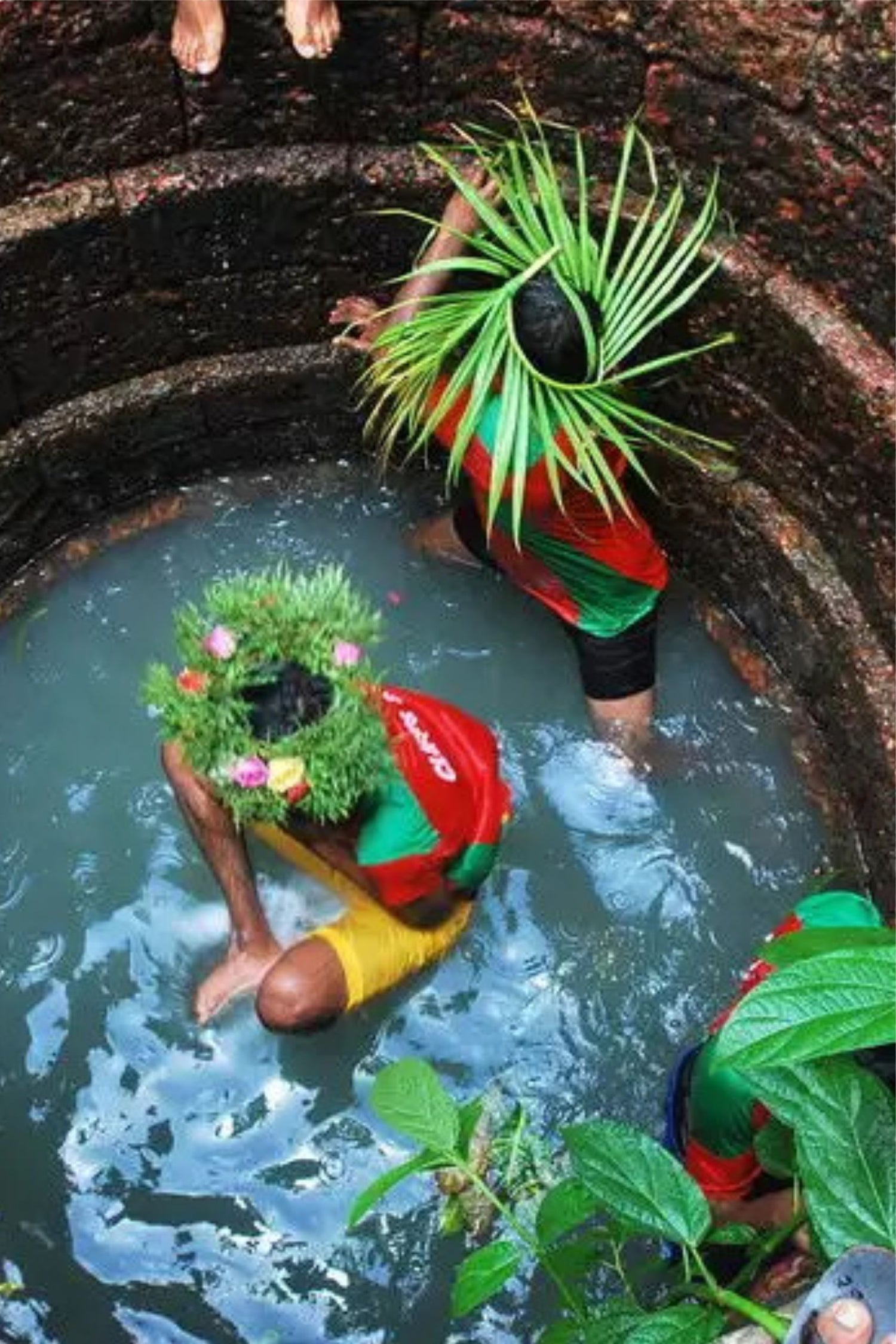
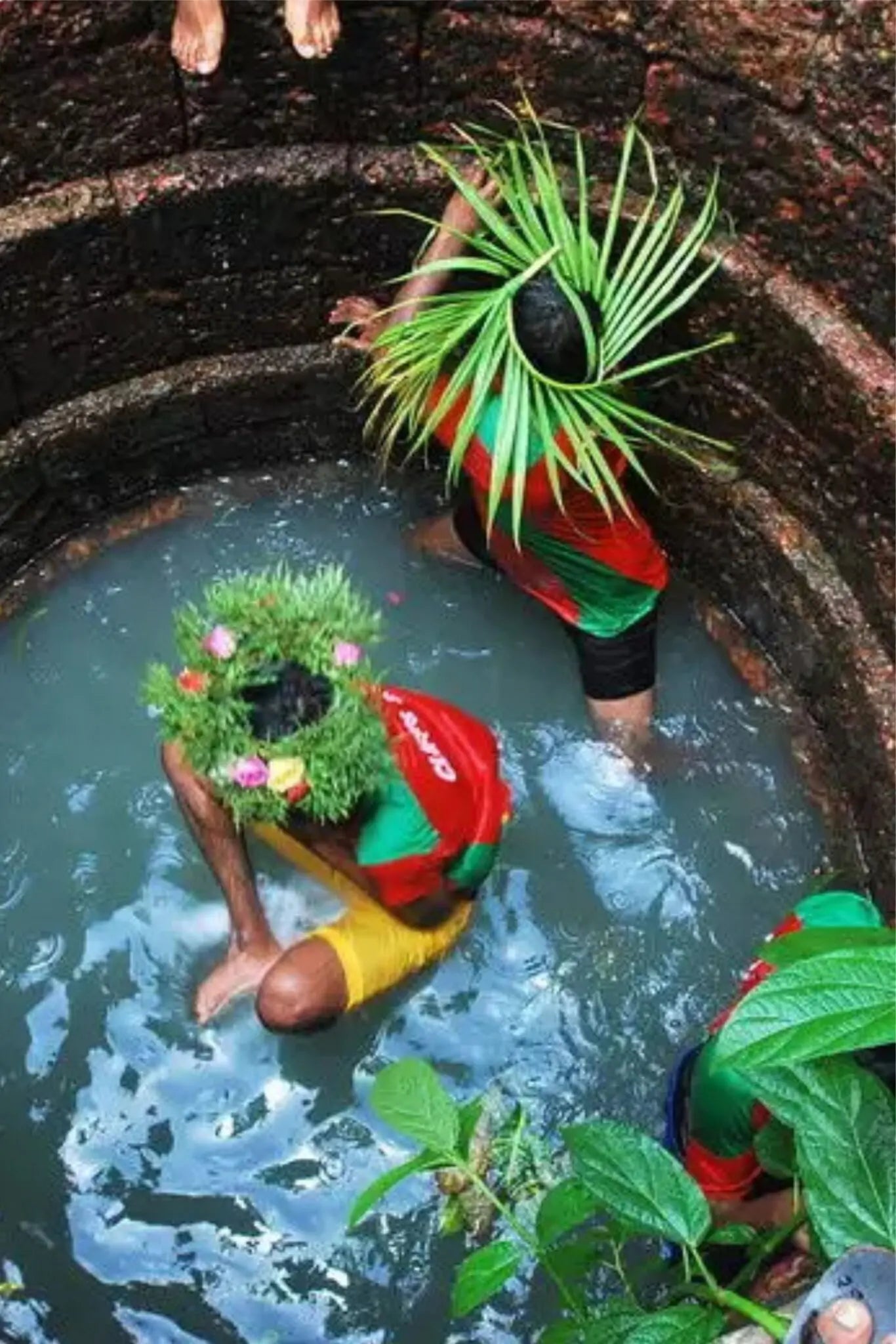
São João
No damp spirits in Goa during monsoon
Come June, and Goa prepares for its vibrant São João festival, marked by jumping into water bodies like wells, lakes, ponds and even pools; traditional Goan delicacies; feni; floats on boats; singing and dancing.
The day begins with prayers for a good monsoon, followed by people wearing kopels—a headband or crown made from fresh flowers, fruit, vegetables, or vines attached with a thread—going around villages, mostly in North Goa, singing traditional songs accompanied with instruments like the ghumot, mhadalem and kansallem. Feni is available aplenty, while seasonal fruits and traditional Goan delicacies like patolleo (finely ground rice flour stuffed with a filling of scraped coconut and jaggery and wrapped in steamed haldi or banana leaves; sannas (rice cakes) and donne or holle, keep the spirits high and the tummies full.
Later during the day, people jump into water bodies, which, according to Catholic scriptures, is symbolic of the baby leaping in the womb and baptism in the River Jordan. It is believed that St. John the Baptist leapt with joy in his mother Elizabeth’s womb when Mary broke the news about expecting Jesus Christ.
Hence, this festival is also celebrated as the Festival of Fertility as young, to-be mothers make offerings to God for a child and a celebration of thanksgiving for newly-weds, and for families with babies born the previous year.
The afternoons and evenings are marked by the Sangodd (floats) on colourful boats decorated with flowers sailing along the lakes. There are also various competitions held throughout the day, including a kopel making competition. While the feast of São João is celebrated worldwide on the same day, Goa is the only place in the world where it is marked by leaping into wells.
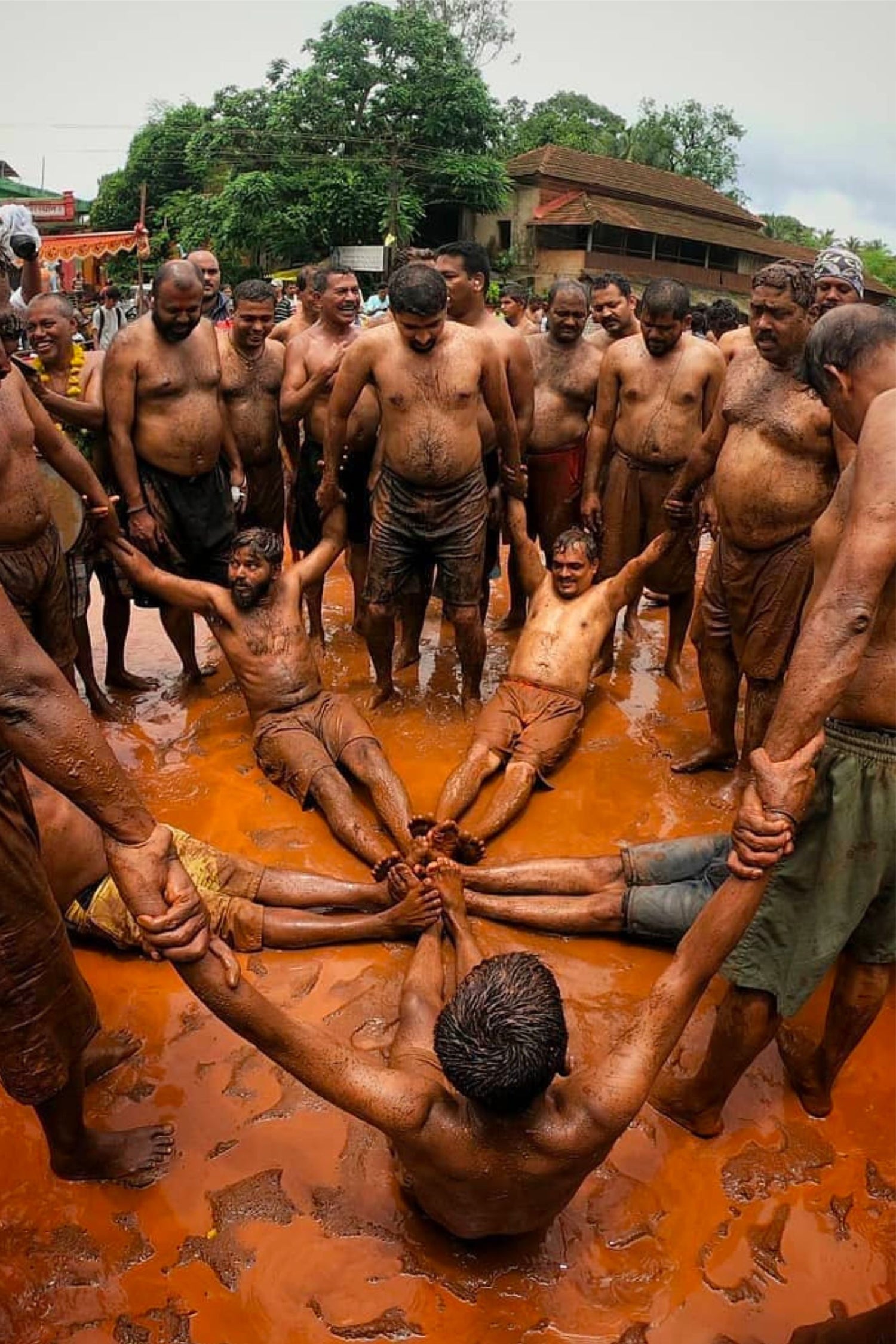

Chikal
Kalo Mud bath therapy, anyone?
Fancy some oil smeared over your body? Followed by a mud bath? No, you’re not being introduced to a spa, but Goa’s very own Chikal Kalo, a unique traditional festival celebrated in Marcel village to commemorate the childhood antics of Lord Krishna.
Since it’s celebrated during the monsoon, the festival derives its name from “chikal” or wet mud.
It is celebrated with great fervour, year after year, as bare-chested men, clad only in their shorts roll around in the mud chanting “Hari Vithal, Jai Vithal” and playing traditional games. The ground opposite Devaki Krishna Temple becomes a playground for over 300 revellers on this day.
Celebrated during Ashadi Ekadashi, the eleventh lunar day of the Hindu month of Ashadha, the festival dates back to over 400 years and is believed to have moved to Marcel from Chorao, along with the temple, during the Portuguese rule.
The festival includes games like chakra (a group of boys holding hands and forming a wheel), a folk version of blind man’s buff, tug-o-war, a game where men form a tunnel and others run through it, etc. Villagers also distribute sweets and snacks to the revellers.
Villagers, tourists and Goans from other places come to witness this unique festival that doesn’t take place anywhere else in India.


